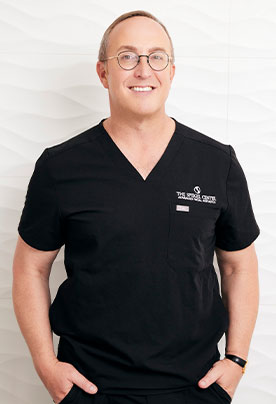
Myth: You need a CT or X-Ray before Forehead contouring.
Fact: If you have no history of prior forehead surgery or injury this is completely unnecessary. An experienced surgeon gains nothing from these pictures. And, 3-D imaging is also not helpful. It may be fun to see the pictures, but it is not worth the cost or the radiation exposure. Some surgeons get x-rays so that they can show their students what they are going to do in surgery and allow the students and surgeon trainees to render an opinion before surgery. In my opinion, these indications are appropriate. There really is only one reason for imaging if you don’t have a prior history of injury or surgery. That would be to determine if the surgeon who wants to do your surgery is capable of doing it. Some surgeons can only do forehead surgery when they drill the bone away, and not when a more elaborate procedure is needed, such as a forehead setback (what is sometimes known as a type 3 procedure). If they see a more complicated forehead they will tell the patient to go elsewhere. This is actually an excellent use of a CT scan but it’s better to see a surgeon who can handle any situation.
Myth: You can just have the bone on your forehead drilled down.
Fact: The vast majority of people (80% or more) need the front of the forehead bone to be set back and repositioned. Drilling or burring it down will only result in an unsafe overly thin forehead. During surgery, we use our senses of sight, touch, and hearing to determine how to proceed. Our vision lets us see the edges of the frontal sinus as they appear so we know where they are and if we can drill away bone or need to set it back. Touch provides further insight into the nature of the bone as the feel of the bone changes as the layers change. And, sound is important as the sound of the bone as we are working changes based upon where we are, how thick the bone is, and where the sinus is located. These senses and direct observation of the situation are more helpful than any radiographic test for helping to determine what to do. And, these indicators lead us to set the bone back over 80 % of the time.
Myth: The center of the forehead is all that matters for your appearance.
Fact: There are many different parts of the forehead that are important, and it’s not just the glabellar ridge “forehead ridge” over the eyes in the center of the forehead. The whole area gets shaped correctly with Dr. Spiegel. This includes opening the eyes, addressing any irregularities on the sides, and smoothing out the primary area of bossing.
Myth: Scalp advancement can always be done with forehead surgery.
Fact: We love to do this at the same time when we can. But, we don’t always have the ability. Advancing the hairline depends upon the position of the existing hairline, the density of the hair, and whether you’ve had any prior surgery on your forehead. Sometimes it is better to go behind the hairline in which case the scalp is not actually brought forward. However, we can usually get around that by doing hair grafts. Individual hairs can be transferred from the back of the head to the front. These hairs hide any incisions, bring the hairline forward, and help create a feminine hairline shape.
Interesting stories:
Dr. Spiegel has done more forehead surgery than any other practicing surgeon. With all of those cases, he’s seen some unexpected things! On two separate occasions, he found a bullet in the head and the patient had no recollection of having been shot!
Interesting fact:
Did you know that the skull bones aren’t always white? Sometimes they are yellow or orange in areas and Dr. Spiegel has even several times seen black bone!





